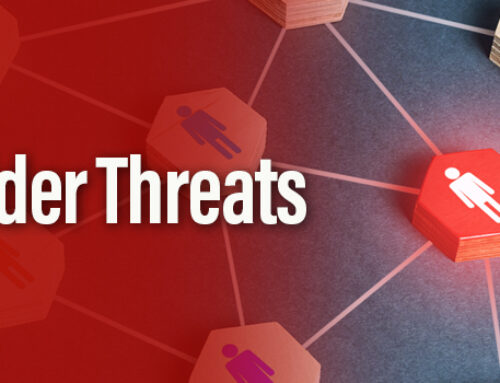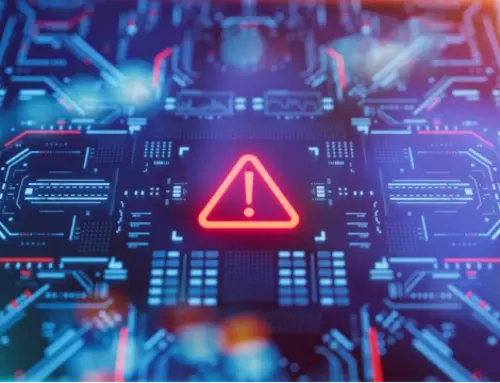
Securing Smart Cities: IoT and Infrastructure Challenges
Securing Smart Cities: Internet of Things (IoT) And Infrastructure Challenges in Smart Cities
Smart cities represent a significant evolution in urban planning and management, leveraging the power of technology to enhance the quality of life for their citizens. These urban centers are built upon a foundation of interconnected systems and devices, often relying heavily on the internet of things (IoT) to gather data, automate processes, and deliver essential services. As smart city initiatives continue to grow, it is becoming increasingly crucial to address the security challenges inherent in these complex, interconnected environments. The integration of IoT technologies into city infrastructure presents both unprecedented opportunities and significant risks, demanding a comprehensive approach to security and privacy.
Understanding Smart Cities and Their Infrastructure
Definition and Concepts of Smart Cities
Smart cities are defined by their strategic use of technology to improve efficiency, sustainability, and livability. The concept revolves around the integration of information and communication technologies (ICT) and IoT across various city operations. This includes smart infrastructure for transportation, energy, healthcare, and public safety. The goal is to create a smart environment that is responsive to the needs of its citizens, optimizing resource allocation and enhancing overall quality of life. This vision requires a robust ecosystem where various IoT applications can seamlessly interact and contribute to a more intelligent and efficient urban landscape.
Importance of Infrastructure in Smart City Development
The development of smart cities hinges on a robust and reliable infrastructure. This infrastructure encompasses not only physical elements like roads, bridges, and buildings but also the digital networks and systems that enable communication and data exchange. The integration of IoT infrastructure is essential for connecting various smart devices and IoT sensors throughout the urban environment. A well-designed and maintained infrastructure is critical for ensuring the seamless operation of smart systems and enabling the collection of real-time data, which is essential for informed decision-making and efficient resource management. Without a solid infrastructure, the potential benefits of smart city technologies cannot be fully realized.
Critical Infrastructure in Urban Environments
Protecting critical infrastructure components is paramount to ensure the stability and resilience of smart cities. This infrastructure includes essential services such as energy grids, water and waste management systems, transportation networks, and communication networks. A failure in any of these systems could have cascading effects, disrupting essential services and potentially endangering the lives of citizens. Therefore, securing smart cities requires a multi-faceted approach that addresses both physical and cyber threats, ensuring the integrity and availability of these vital resources. We assure you your infrastructure is secure and safe.
IoT Technologies in Smart Cities
Applications of IoT in Smart City Infrastructure
IoT technologies enhance the efficiency and sustainability of various critical systems. These enhancements manifest in diverse applications, including:
- Smart grids optimizing energy distribution.
- Smart transportation systems where sensors monitor traffic flow and optimize routes to improve public transport efficiency.
Furthermore, smart city infrastructure leverages IoT to enhance waste management, monitor water quality, and improve public safety. At Teamwin Global Technologica, we are at the forefront of deploying these IoT applications to create secure smart cities, ensuring seamless integration and robust security for all of our clients.
IoT-based Smart City Solutions
IoT-based smart city solutions are revolutionizing urban management by enabling data-driven decision-making and automated processes. These solutions harness the power of IoT sensors and IoT networks to collect real-time data on various aspects of city life. Some examples of these solutions include:
- Smart parking systems that use IoT devices to monitor parking space availability.
- Smart lighting systems that adjust brightness based on ambient light and occupancy.
We empower your smart city initiative with secure and reliable IoT solutions, prioritizing security and privacy at every step.
Innovative Technologies for Smart Cities
Innovative technologies are essential for the continued evolution of smart cities. Beyond basic IoT, advanced solutions like artificial intelligence, machine learning, and blockchain are being integrated to enhance the capabilities of smart city systems. AI and machine learning algorithms can analyze vast amounts of data generated by IoT sensors to predict traffic patterns, optimize energy consumption, and detect potential security threats. Blockchain technology can enhance the security and transparency of data transactions. We assure you your integration of IoT and smart technologies is secure, safe, and future-proof.
Challenges in Securing Smart Cities
Cybersecurity Challenges in Smart Cities
Cybersecurity challenges demand constant vigilance due to the expanding attack surface. As the integration of IoT becomes more pervasive, every IoT device represents a potential entry point for malicious actors. Securing smart cities requires a holistic approach, addressing vulnerabilities in IoT infrastructure and IoT network. Protecting the privacy and security of citizens’ data is paramount. We empower your smart city initiative with cutting-edge security solutions, ensuring robust protection against evolving cyber threats.
Security and Privacy Issues with IoT Applications
Security and privacy issues with IoT applications are a critical concern because each IoT device generates and transmits data. Insufficiently secured IoT applications can be exploited to gain access to sensitive information, compromise critical infrastructure, and disrupt essential services. The development of smart cities must prioritize security and privacy. We ensure that your IoT applications are designed with security and privacy in mind, safeguarding citizen data and maintaining public trust.
Infrastructure Vulnerabilities in Smart City Systems
Infrastructure vulnerabilities pose a significant threat to the stability and security of urban environments. Critical infrastructure is increasingly reliant on IoT technologies and interconnected networks, which create potential points of failure. Securing this critical infrastructure requires a proactive approach. By prioritizing security, we can ensure the resilience and reliability of smart city infrastructure, protecting citizens and maintaining the smooth operation of urban services.
Smart City Initiatives and Future Directions
Global Examples of Secure Smart City Initiatives
Several smart city initiatives showcase the successful integration of technology while prioritizing security. These serve as models, proving that innovation and security can coexist. Some key examples are summarized below:
| City | Focus Area |
|---|---|
| Amsterdam | Sustainable Smart Cities |
| Singapore | Enhanced Urban Infrastructure (Leveraging IoT) |
| Barcelona | Efficient Waste Management and Smart Lighting Systems (Using IoT) |
challenges and Opportunities for Sustainable Smart Cities
One of the primary challenges is ensuring the security and privacy of data. Balancing the need for data-driven decision-making with the imperative to protect citizen privacy requires careful planning and robust security measures. Integrating IoT can lead to more efficient resource management, reduced carbon emissions, and improved quality of life for residents. Teamwin Global Technologica helps ensure that your smart city development addresses both challenges and opportunities.
Future of IoT and Smart City Security
The future of security is poised for significant advancement, driven by the increasing integration of IoT systems and the escalating threat landscape. Future smart cities will leverage AI and machine learning to proactively detect and mitigate potential security threats. Innovations in blockchain technology will further enhance the security and transparency of data transactions. Teamwin Global Technological stands ready to protect your future smart city with our innovative smart technologies.
5 Surprising Facts about Securing Smart Cities IoT and Infrastructure Challenges
- Over 90% of urban areas are expected to invest in smart city initiatives by 2025, yet many lack robust cybersecurity frameworks.
- Approximately 60% of IoT devices used in smart cities are vulnerable to cyberattacks, with outdated software being a major contributor.
- Smart traffic systems can reduce congestion by up to 30%, but they also create additional entry points for cyber threats.
- Public trust in smart city technologies can drop by over 50% after a single major security breach, impacting future adoption.
- Only 20% of city planners consider data privacy when designing smart city infrastructures, despite the massive amounts of sensitive data collected.
What are the main challenges in securing smart cities?
Securing smart cities involves addressing various challenges such as the vulnerability of IoT devices, cybersecurity threats, and ensuring the integrity of data shared across smart city services. Additionally, the integration of multiple systems can lead to potential points of failure that need to be managed effectively.
How do IoT technologies enhance smart city infrastructure?
IoT technologies enhance smart city infrastructure by enabling real-time data collection and analysis, which informs decision-making processes. This leads to improved resource management, enhanced public safety, and increased operational efficiency across various sectors including smart mobility, smart healthcare, and smart energy.
What role does cybersecurity play in smart city environments?
Cybersecurity is crucial in smart city environments as it protects sensitive data and ensures the reliability of critical infrastructure. A robust cybersecurity framework helps mitigate risks associated with many IoT devices and secures communication within the smart city ecosystem, promoting trust among residents and stakeholders.
How can cities address the challenges and future of smart city initiatives?
Cities can address the challenges and future of smart city initiatives by investing in resilient infrastructure, adopting best practices in IoT security, and fostering public-private partnerships. Engaging with the community and leveraging international conferences on smart technologies can also provide insights and innovative solutions.
What are the benefits of smart healthcare systems in smart cities?
Smart healthcare systems in smart cities offer numerous benefits, including improved patient care through IoT-enabled health monitoring, real-time data access for healthcare providers, and efficient resource allocation. These systems also enhance public health responses and promote overall community wellness.
How do smart city applications utilize IoT data?
Smart city applications utilize IoT data to optimize urban services such as traffic management, waste collection, and energy distribution. By analyzing real-time data from many smart devices and sensors, cities can improve operational efficiency, reduce costs, and enhance the quality of life for residents.
What is the significance of smart mobility in the context of smart cities?
Smart mobility is significant in the context of smart cities as it promotes sustainable transportation solutions, reduces congestion, and minimizes environmental impact. Integrating smart mobility systems with IoT infrastructure facilitates seamless connectivity and enhances the overall urban experience for residents and visitors.
How can cities around the world implement smart city technologies effectively?
Cities around the world can implement smart city technologies effectively by developing a strategic plan that incorporates stakeholder engagement, prioritizing infrastructure upgrades, and focusing on interoperability among diverse systems. Continuous evaluation and adaptation to emerging technologies are also vital for long-term success.








